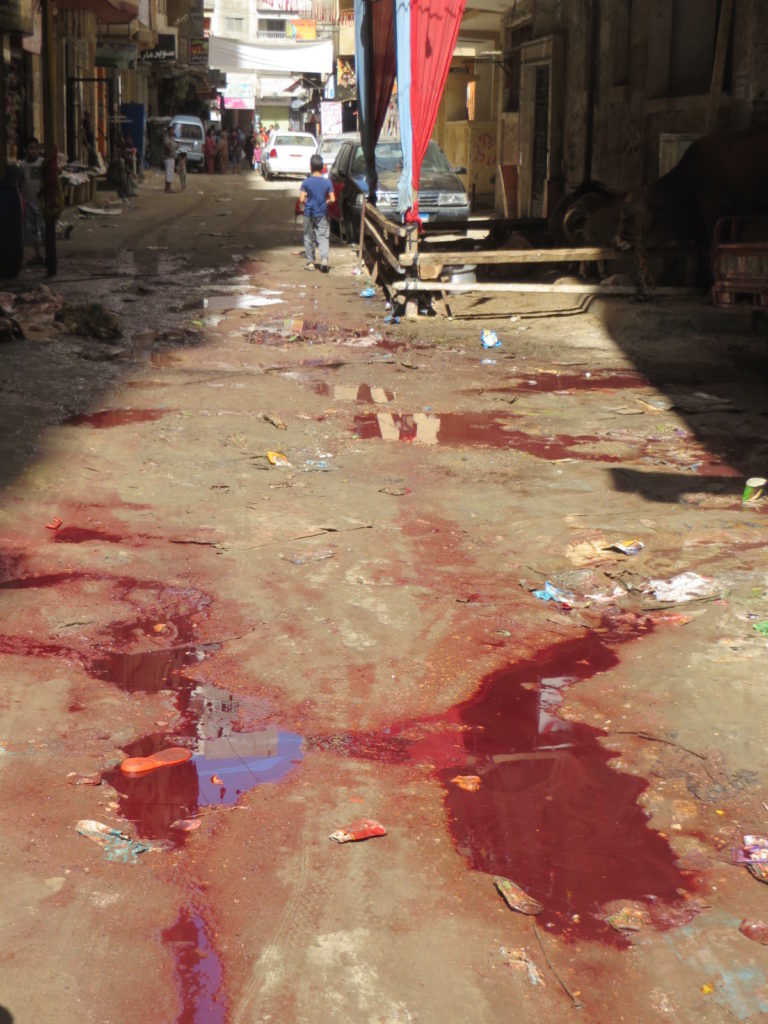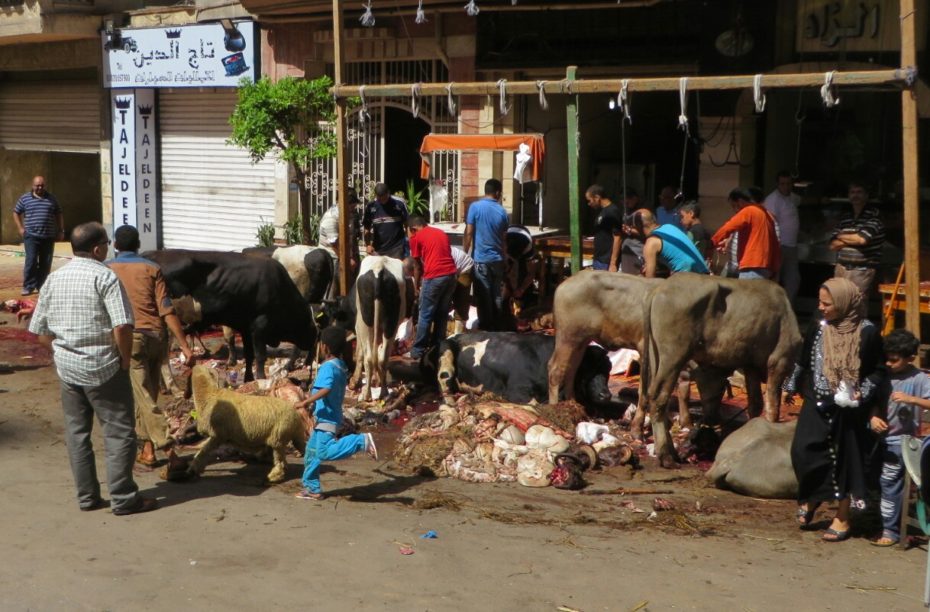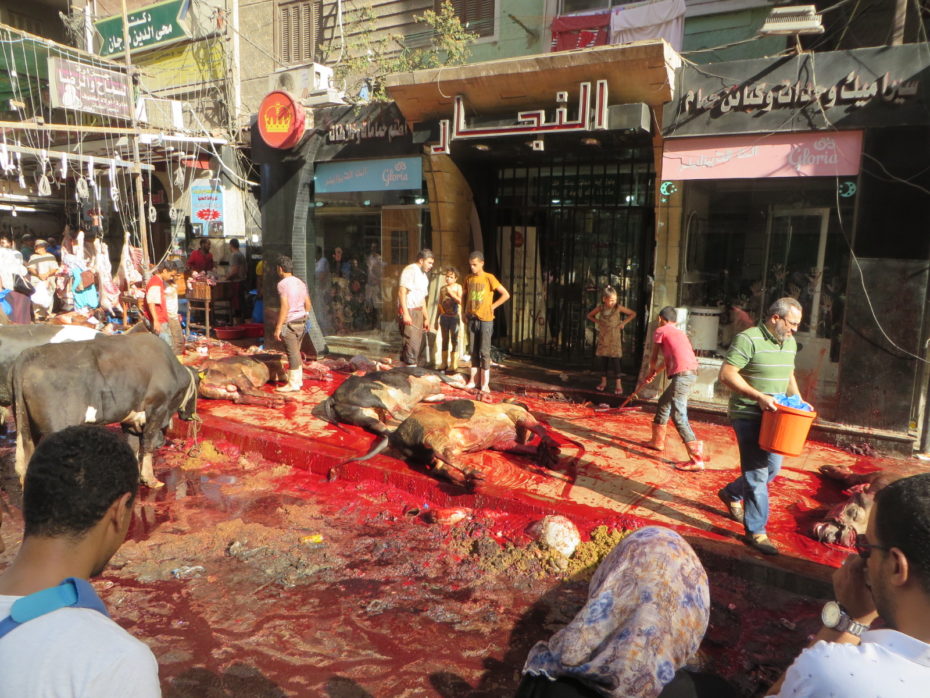Animal slaughter on the streets of Alexandria
Warning: sensitive animal lovers should know that this post includes pictures of dead animals and blood, no close-ups but you probably wont want to zoom in.
With swift slices of a knife to its tendons the calf collapsed onto her forelegs and the burly team of butchers heaved her onto her side. In seconds the throat was slashed and the calf thrashed upwards, struggling against her severed muscles, forcing the men to jump back as her head spun in a wide arc, neck open up to the backbone, spraying a bloody geyser over the men and leaving a Jackson Pollockesque splatter over the shop wall. But this was all the animal had in her and she slumped to the bloody pavement and was soon still. Close by the corpse of her Frisian compatriot juddered with latent nervous twitches.
The streets of Alexandria, on the northern coast of Egypt, at the time of Eid al Adha are no place for sentimental animal lovers. For this is the feast of sacrifice, to commemorate Abraham’s (Ibrahim as he is known in Arabic) willingness to sacrifice even his own son as a sign of his devotion to God. Allah may have spared the son but animals are not so lucky on this day and the demand for meat means that butcher’s doorsteps become abattoirs for the run up to the celebrations. Cattle, sheep and even the occasional camel chew aimlessly as they wait, seemingly oblivious to their fate.
The laws on halal slaughter are in fact quite strict and pay careful attention to any suffering of the animal, although the debates in western countries about the practice of stunning beforehand will doubtless run and run. There is little doubt that all the butchers I watched had no intention of prolonging the process and many animals expired quickly but it is hardly instantaneous and once in a while an animal will struggle for a minute or two.

Animals should not see the knife before their death and should not witness the death of other animals or see their blood to limit any stress, which aside from any religious or ethical motivation can affect the taste of the meat. Clearly at Eid, these rules were being broken and given that Mohamed said that the slaughter should only occur after the morning prayers on the main day of Eid it didn’t stop many on the previous evening carrying out their work. Not only do animals get to see the deaths of others but they get a ringside view of the heaps of entrails, skins and detached heads left to entertain the flies until they are processed. Unlike at home, much of the leftovers are for human consumption. Brain is a welcome snack here but many westerners may find that the arabic word for it, appropriately sounds rather like “muck”.
What your average Egyptian amongst the crowds that congregate in front of the butchers have been more concerned about however, is the price of meat and the country has experienced protests, with a recent meat boycott campaign, the butchers being accused of artificially boosting prices. In reality it probably has more to do with seasonal demand, rising feed costs and limited supplies from an industry hampered by economic decline but in a meat loving nation, price beats animal welfare and even some religious concerns any day. People do see it as a traditional and religious duty to buy meat for this day so they may grumble but will still hand over the cash. Despite these issues, the tradition’s heart is one of charity: a third of the meat will be given to family and friends and another third will be given to the poor, after all, you can’t commemorate a sacrifice without sacrificing something yourself.






